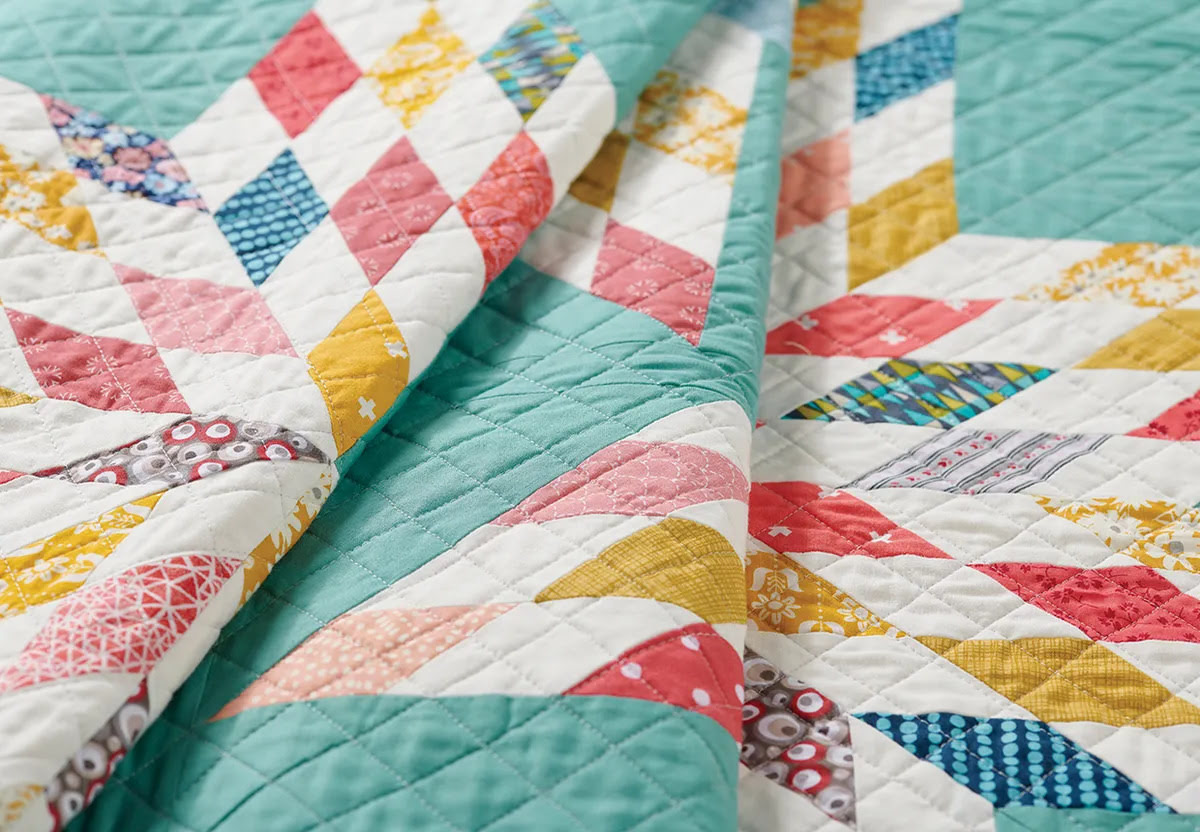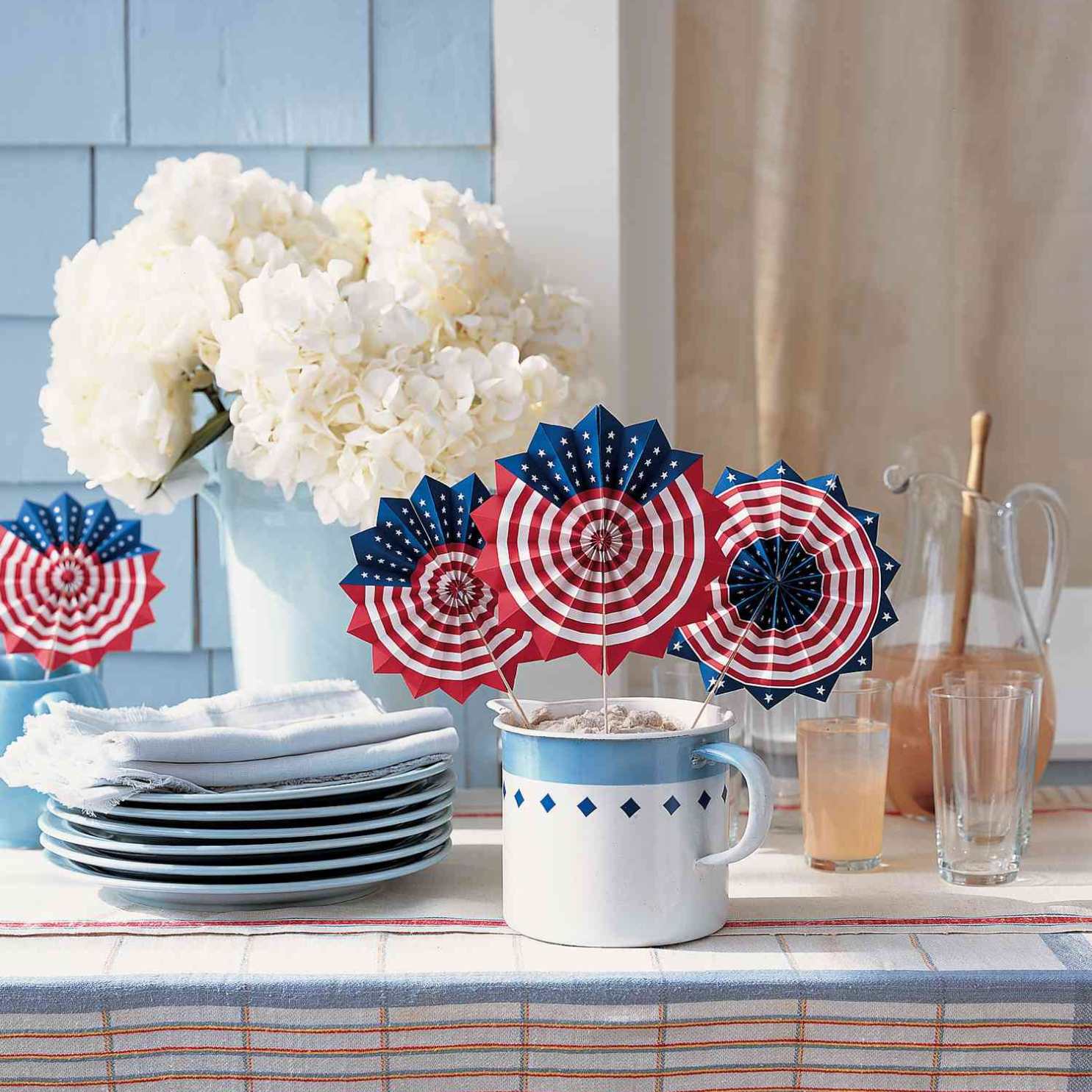Home>Create & Decorate>DIY & Crafts>Discover The Art Of Quilting: A Guide To Creating Beautiful And Functional Quilts


DIY & Crafts
Discover The Art Of Quilting: A Guide To Creating Beautiful And Functional Quilts
Published: February 15, 2024

Content Creator specializing in woodworking and interior transformations. Caegan's guides motivate readers to undertake their own projects, while his custom furniture adds a personal touch.
Learn the art of quilting with our comprehensive guide. Create stunning and practical quilts with our DIY & Crafts tips and techniques. Start your quilting journey today!
(Many of the links in this article redirect to a specific reviewed product. Your purchase of these products through affiliate links helps to generate commission for Twigandthistle.com, at no extra cost. Learn more)
Introduction
Quilting is an age-old craft that has been cherished for generations. It is a beautiful art form that allows individuals to express their creativity while producing functional and aesthetically pleasing pieces. Whether you are a seasoned quilter or a beginner eager to embark on this creative journey, this comprehensive guide will provide you with the knowledge and inspiration to delve into the world of quilting.
Throughout history, quilts have served as more than just blankets; they have been woven into the fabric of cultures, traditions, and stories. From the intricate patchwork of the Amish to the vibrant and bold designs of Hawaiian quilts, each quilt tells a unique tale. The art of quilting has evolved over time, blending traditional techniques with modern innovations, resulting in a diverse array of styles and approaches.
Quilting offers a sense of fulfillment and accomplishment as you transform simple pieces of fabric into a work of art. It is a craft that fosters patience, precision, and creativity, providing a therapeutic and meditative experience for many enthusiasts. Whether you are drawn to the soothing rhythm of hand quilting or the efficiency of machine quilting, there is a technique that will resonate with you.
In this guide, we will explore the fundamentals of quilting, from selecting fabrics and patterns to mastering essential and advanced techniques. Additionally, we will delve into the practical applications of quilting, such as creating quilts for warmth, decoration, or gifting. Furthermore, we will highlight the profound impact quilting can have as a form of self-expression and a means of artistic exploration.
Whether you are seeking a new hobby, a way to preserve cherished memories, or a means to connect with a community of fellow quilters, this guide will serve as a valuable resource on your quilting journey. So, gather your fabrics, thread your needles, and prepare to embark on a captivating adventure into the world of quilting.
Chapter 1: Getting Started with Quilting
Quilting is a timeless craft that welcomes beginners with open arms, offering a rewarding and fulfilling creative outlet. As you embark on your quilting journey, it's essential to start with a solid foundation. Here are the key steps to get started with quilting:
-
Understanding the Basics: Before diving into your first quilt, familiarize yourself with the fundamental concepts of quilting. Learn about the different types of quilts, such as patchwork, appliqué, and whole cloth quilts. Gain an understanding of quilting terminology, including blocks, sashing, and batting. This knowledge will provide a strong framework for your quilting endeavors.
-
Gathering Essential Supplies: Equip yourself with the necessary tools and materials to begin quilting. Essential supplies include fabric, quilting thread, needles, a rotary cutter, cutting mat, ruler, and a sewing machine. Additionally, consider investing in quilting books or online tutorials to expand your knowledge and skills.
-
Start with a Small Project: As a beginner, it's beneficial to start with a small quilting project to build confidence and familiarity with the process. Consider creating a simple table runner, wall hanging, or baby quilt. These projects allow you to practice quilting techniques on a smaller scale before tackling larger endeavors.
-
Joining Quilting Communities: Engage with fellow quilters by joining local quilting groups or online communities. These platforms provide valuable support, inspiration, and opportunities to learn from experienced quilters. Sharing your progress and seeking advice from the quilting community can enrich your quilting experience.
-
Exploring Quilting Classes: Consider enrolling in quilting classes or workshops to receive hands-on guidance from experienced instructors. These classes offer a structured learning environment and the opportunity to acquire new skills while connecting with other quilting enthusiasts.
By embracing these foundational steps, you will lay the groundwork for a fulfilling and enjoyable quilting journey. As you immerse yourself in the world of quilting, remember that patience and practice are key. Embrace the learning process, celebrate your progress, and let your creativity flourish as you embark on this captivating craft.
Chapter 2: Choosing Fabrics and Patterns
Selecting the right fabrics and patterns is a crucial aspect of quilting, as it sets the foundation for the visual appeal and overall aesthetic of your quilt. When embarking on a quilting project, consider the following factors to make informed decisions about fabrics and patterns:
Understanding Fabric Selection
The fabric you choose plays a pivotal role in the look, feel, and durability of your quilt. Cotton fabric is a popular choice among quilters due to its versatility, ease of handling, and wide range of prints and colors. When selecting fabrics, consider the following aspects:
- Quality: Opt for high-quality, 100% cotton fabric to ensure durability and longevity of your quilt.
- Color and Print: Explore a diverse selection of colors and prints to achieve the desired visual impact. Consider the theme and purpose of your quilt when choosing patterns, whether it's a vibrant and playful design for a child's quilt or a sophisticated and elegant motif for a decorative quilt.
Exploring Quilt Patterns
Quilt patterns serve as the blueprint for your design, guiding the arrangement of fabric pieces to create visually captivating compositions. As you delve into the world of quilt patterns, consider the following points:
- Traditional vs. Modern: Determine whether you are drawn to traditional quilt patterns, such as log cabin or nine-patch blocks, or if you prefer modern and innovative designs that push the boundaries of traditional quilting aesthetics.
- Complexity: Assess the complexity of the pattern based on your skill level and comfort with quilting techniques. Beginners may opt for simpler patterns with straightforward block arrangements, while experienced quilters may embrace intricate and challenging designs.
Harmonizing Fabrics and Patterns
Achieving harmony between fabrics and patterns is essential for a cohesive and visually appealing quilt. Consider the following tips to harmonize your fabric and pattern selections:
- Contrast and Balance: Experiment with contrasting colors and patterns to create visual interest and balance within your quilt. Pair bold, vibrant fabrics with subtle, complementary prints to achieve a harmonious composition.
- Theme and Storytelling: Infuse your quilt with a narrative by selecting fabrics and patterns that convey a specific theme or story. Whether it's a nature-inspired motif or a nostalgic vintage pattern, let your fabric and pattern choices reflect the essence of your quilt's narrative.
By carefully considering fabric quality, color, print, and pattern complexity, you can curate a captivating and harmonious selection of fabrics and patterns for your quilting projects. This thoughtful approach will lay the groundwork for creating quilts that not only showcase your creativity but also resonate with the intended purpose and audience.
Chapter 3: Tools and Equipment for Quilting
Quilting, like any craft, requires a set of specialized tools and equipment to bring your creative vision to life. Whether you are a novice or a seasoned quilter, having the right tools at your disposal is essential for achieving precision, efficiency, and overall quilting success. Here's a detailed look at the essential tools and equipment for quilting:
Sewing Machine:
A reliable sewing machine designed for quilting is a fundamental investment for any quilter. Look for a machine with features such as a wide throat space, adjustable speed control, and a variety of built-in stitches to accommodate different quilting techniques.
Rotary Cutter and Cutting Mat:
A rotary cutter, paired with a self-healing cutting mat, is indispensable for accurately cutting fabric pieces. These tools provide the precision and flexibility needed to create intricate quilt blocks and patterns.
Quilting Ruler:
A clear, non-slip quilting ruler is essential for measuring and cutting fabric with accuracy. Look for rulers with grid markings and various angle measurements to facilitate precise cutting and piecing.
Quilting Thread:
High-quality quilting thread is designed to withstand the rigors of quilting, offering strength and durability. Choose thread colors that complement your fabric selections and consider the weight and fiber content suitable for your quilting project.
Needles and Pins:
Invest in a variety of quilting needles, including hand-sewing needles and machine needles specifically designed for quilting. Additionally, quilting pins with fine, sharp points are essential for securing fabric layers during the quilting process.
Quilting Hoops or Frames:
For hand quilting enthusiasts, quilting hoops or frames provide tension and stability for the quilt sandwich, allowing for smooth and even stitching across the fabric layers.
Iron and Ironing Board:
A high-quality iron and spacious ironing board are indispensable for achieving crisp, well-pressed seams in quilting. Proper pressing is crucial for ensuring precise piecing and professional-looking quilt blocks.
Seam Ripper:
Mistakes happen, and a seam ripper is a valuable tool for undoing stitching errors without damaging fabric. Having a reliable seam ripper on hand can save time and frustration during the quilting process.
Quilting Templates and Stencils:
Quilting templates and stencils are useful for creating consistent shapes and designs in quilting. They provide guidance for quilting motifs, borders, and overall quilt patterns, enhancing the visual appeal of your quilting projects.
Quilting Frame or Extension Table:
For machine quilters, a quilting frame or extension table can provide the necessary support and space for maneuvering large quilts through the sewing machine, ensuring smooth and precise quilting stitches.
By equipping yourself with these essential tools and equipment, you will be well-prepared to embark on your quilting endeavors with confidence and efficiency. These tools not only facilitate the quilting process but also contribute to the overall quality and craftsmanship of your finished quilts.
Chapter 4: Basic Quilting Techniques
Mastering basic quilting techniques is the cornerstone of creating beautiful and enduring quilts. Whether you are new to quilting or seeking to refine your foundational skills, understanding and practicing these techniques will elevate your craft and set the stage for more advanced quilting endeavors.
1. Piecing
Piecing is the process of sewing together fabric pieces to form quilt blocks. Achieving precise and consistent seam allowances is essential for seamless block assembly. Utilizing a quarter-inch presser foot and pressing seams open or to the side ensures uniform block dimensions and minimizes distortion.
2. Pressing
Proper pressing is crucial for achieving crisp, flat seams and well-aligned quilt blocks. Use a hot iron and press seams in the direction specified by the quilt pattern to maintain seam allowances and prevent fabric puckering. Pressing seams open or to the darker fabric side reduces bulk and facilitates smooth block assembly.
3. Basting
Basting secures the quilt top, batting, and backing layers together before quilting. Options for basting include safety pins, spray basting, or hand basting with thread. Ensuring the layers are taut and free of wrinkles is essential for a smooth quilting process and professional-looking results.
4. Quilting
Quilting refers to the stitching that secures the quilt top, batting, and backing layers together. Common quilting techniques include straight-line quilting, free-motion quilting, and walking foot quilting. Selecting the appropriate quilting design and thread color enhances the visual appeal and texture of the quilt.
5. Binding
Binding provides a finished edge to the quilt and encases the raw edges of the quilt layers. Double-fold binding, cut on the bias or straight grain, is meticulously sewn to the quilt perimeter, mitering the corners for a polished appearance. Hand-stitched or machine-stitched binding completes the quilt with a professional touch.
6. Trimming
Trimming the excess batting and backing fabric after quilting ensures a clean and uniform quilt edge. Using a rotary cutter and clear ruler, carefully trim the excess fabric, maintaining straight and even edges. This step prepares the quilt for the final binding application.
By honing these basic quilting techniques, you will lay a solid foundation for your quilting journey, enabling you to approach more intricate and advanced quilting projects with confidence and skill. Embrace the learning process, practice diligently, and celebrate the artistry and craftsmanship inherent in the world of quilting.
Chapter 5: Advanced Quilting Techniques
As you progress in your quilting journey, delving into advanced quilting techniques opens up a world of creative possibilities and elevates the artistry of your quilts. These techniques require precision, patience, and a willingness to push the boundaries of traditional quilting. Here are some advanced quilting techniques to expand your quilting repertoire:
1. Foundation Paper Piecing
Foundation paper piecing allows for the creation of intricate and precisely pieced quilt blocks. By sewing fabric onto a paper foundation following numerical patterns, complex designs with sharp angles and small pieces can be achieved. This technique is ideal for achieving precise and visually striking quilt blocks.
2. Appliqué
Appliqué involves attaching fabric shapes onto a background fabric to create decorative motifs, designs, or pictorial elements on quilts. Advanced appliqué techniques include needle-turn appliqué, reverse appliqué, and complex layered appliqué, adding depth and dimension to quilt designs.
3. Curved Piecing
Curved piecing introduces graceful arcs and circles into quilt designs, challenging quilters to sew smooth and precise curved seams. Mastering curved piecing techniques opens the door to creating stunning floral motifs, abstract designs, and modern quilt compositions.
4. Free-Motion Quilting
Free-motion quilting offers the freedom to create intricate and elaborate quilting designs by moving the fabric freely under the needle of the sewing machine. Advanced free-motion quilting techniques include stippling, feathers, and intricate motifs, allowing quilters to add texture and visual interest to their quilts.
Read more: Transforming Your Home Into A Cat-Friendly Haven: The Ultimate Guide To Creating A Cat Cabin
5. Thread Painting
Thread painting involves using colored threads to create detailed and realistic images on quilted pieces. By layering threads and varying stitch density, advanced thread painting techniques can produce lifelike portraits, landscapes, and intricate textile art.
6. Trapunto
Trapunto, also known as stuffed or corded quilting, adds dimension and texture to quilted motifs by selectively stuffing areas of the quilt with additional batting. Advanced trapunto techniques involve creating intricate raised designs and sculptural effects, enhancing the tactile and visual appeal of the quilt.
Embracing these advanced quilting techniques expands your creative horizons and allows you to infuse your quilts with intricate details, artistic expression, and a heightened level of craftsmanship. As you explore these techniques, remember to approach them with patience, practice, and a spirit of artistic exploration, allowing your quilting journey to flourish and evolve.
Chapter 6: Adding Borders, Binding, and Finishing Touches
The addition of borders, binding, and finishing touches serves as the final act in the creation of a quilt, elevating it from a collection of fabric pieces to a cohesive and polished work of art. These elements not only provide structural integrity but also contribute to the overall aesthetic and functionality of the quilt. Let's delve into the essential aspects of adding borders, binding, and finishing touches to your quilts.
Borders
Borders frame the central quilt design, providing a visual boundary and enhancing the overall composition. When adding borders to your quilt, consider the following guidelines:
- Proportion and Balance: Select border widths that complement the quilt design and maintain visual balance. Experiment with multiple borders to create depth and visual interest.
- Mitered Corners: Achieve clean and professional-looking corners by mitering border seams at a 45-degree angle, ensuring a seamless transition between border segments.
- Border Design: Incorporate pieced or appliquéd border designs to add intricate details and complement the quilt's theme or motifs.
Binding
Binding not only finishes the raw edges of the quilt but also adds a decorative and functional element. When applying binding to your quilt, keep the following considerations in mind:
- Fabric Selection: Choose a binding fabric that complements the quilt design and provides a cohesive frame for the quilt edges.
- Bias Binding: Opt for bias-cut binding strips to ensure flexibility and durability, especially for quilts with curved edges.
- Hand or Machine Binding: Decide whether to finish the binding by hand or machine, considering the desired aesthetic and the level of craftsmanship you aim to achieve.
Finishing Touches
The final touches of a quilt encompass a range of details that elevate its visual appeal and functionality. Consider incorporating the following finishing touches:
- Labeling: Add a personalized quilt label that includes your name, the quilt's title, creation date, and any meaningful details or dedications.
- Quilting Embellishments: Enhance the quilt with embellishments such as embroidery, beads, or fabric appliqués to add texture and visual interest.
- Quilt Care Instructions: Include care instructions to guide the quilt's recipient in preserving its beauty and longevity.
By meticulously attending to the details of borders, binding, and finishing touches, you will bring your quilting project to its full potential, culminating in a masterpiece that reflects your creativity and dedication. These elements not only contribute to the visual impact of the quilt but also ensure its durability and longevity, allowing your quilts to be cherished for generations to come.
Chapter 7: Quilting for Different Purposes
Quilting transcends mere artistic expression; it serves a multitude of practical and meaningful purposes, enriching the lives of both creators and recipients. Understanding the diverse applications of quilting allows enthusiasts to tailor their craft to specific needs and occasions, infusing each quilt with purpose and significance.
1. Quilts for Warmth and Comfort
Quilts have long been cherished for their ability to provide warmth and comfort. Whether as cozy bed covers, snuggly throws for chilly evenings, or comforting companions during illness, quilts offer a tangible source of warmth and solace. Quilters often select soft, durable fabrics and warm batting to create quilts that offer both physical and emotional comfort.
2. Decorative Quilts for Home and Living Spaces
Quilts serve as striking decorative elements within homes, adding color, texture, and personality to living spaces. From vibrant wall hangings that infuse rooms with character to meticulously crafted table runners that adorn dining tables, decorative quilts contribute to the ambiance and visual appeal of interior spaces. Quilters often tailor their designs to complement specific decor styles and color schemes, creating bespoke pieces that harmonize with their surroundings.
3. Commemorative and Heirloom Quilts
Quilts crafted to commemorate special occasions, milestones, or cherished memories hold profound sentimental value. These quilts become tangible representations of love, celebration, and remembrance, often incorporating personalized details such as embroidered names, significant dates, or symbolic motifs. Heirloom quilts, passed down through generations, carry the rich tapestry of family history, preserving legacies and fostering connections across time.
4. Quilts for Gifting and Generosity
The act of gifting a handmade quilt is a gesture of unparalleled thoughtfulness and generosity. Quilters often create quilts as heartfelt gifts for weddings, births, graduations, or to offer comfort during challenging times. These gifts convey warmth, care, and the enduring spirit of handmade craftsmanship, leaving a lasting impression on recipients.
5. Quilts for Community and Social Causes
Quilting has the power to unite communities and support meaningful causes. Quilts created for charity, disaster relief, or community outreach initiatives embody the spirit of compassion and solidarity. These quilts offer tangible support and comfort to those in need, embodying the collective goodwill and empathy of the quilting community.
6. Artistic and Expressive Quilts
Quilts serve as a canvas for artistic expression, allowing quilters to convey emotions, stories, and perspectives through their craft. Art quilts, often characterized by innovative techniques and unconventional designs, push the boundaries of traditional quilting, serving as powerful vehicles for personal and societal narratives.
By recognizing the diverse purposes of quilting, enthusiasts can channel their creativity and skills to create quilts that resonate with specific intentions and recipients. Whether crafting quilts for warmth, commemoration, generosity, or artistic expression, each quilt becomes a meaningful and purposeful creation, enriching the lives of both creators and those who receive these cherished works of art.
Chapter 8: Quilting as a Creative Outlet
Quilting transcends the realm of practicality and craftsmanship, emerging as a profound and versatile form of creative expression. For many individuals, quilting serves as a deeply enriching and therapeutic outlet for artistic exploration and self-discovery. As a creative endeavor, quilting offers a myriad of opportunities for personal growth, artistic fulfillment, and the cultivation of a vibrant and supportive community.
At its core, quilting as a creative outlet provides a space for individuals to unleash their imagination, experiment with colors, textures, and patterns, and translate their innermost thoughts and emotions into tangible works of art. The process of selecting fabrics, designing quilt patterns, and meticulously piecing together intricate compositions fosters a sense of artistic autonomy and self-expression. Quilters find joy in the freedom to infuse their quilts with personal narratives, cultural influences, and thematic elements, resulting in quilts that are as unique and diverse as the individuals who create them.
Beyond individual expression, quilting as a creative outlet nurtures a sense of community and camaraderie among enthusiasts. Quilting groups, guilds, and online communities provide platforms for quilters to connect, share ideas, and draw inspiration from one another. The exchange of techniques, encouragement, and shared passion for quilting fosters a supportive and inclusive environment where creativity flourishes and friendships are forged. Through collaborative projects, quilt challenges, and group exhibitions, quilters celebrate the diversity of artistic voices and celebrate the collective spirit of creativity.
Moreover, quilting as a creative outlet offers a respite from the demands of daily life, serving as a meditative and soothing practice that promotes mindfulness and relaxation. The rhythmic process of quilting, whether by hand or machine, encourages a state of focused attention and tranquility, allowing quilters to immerse themselves in the present moment and find solace in the act of creation. The therapeutic benefits of quilting extend beyond the finished quilt, enriching the quilter's well-being and nurturing a sense of fulfillment.
In essence, quilting as a creative outlet transcends the boundaries of a mere hobby, evolving into a profound and multifaceted means of self-expression, community engagement, and personal rejuvenation. As individuals embrace quilting as a creative journey, they embark on a path of artistic discovery, self-realization, and the cultivation of enduring connections within the vibrant tapestry of the quilting community.
Conclusion
In conclusion, the art of quilting encompasses a rich tapestry of tradition, creativity, and purpose. From the meticulous selection of fabrics and patterns to the mastery of essential and advanced techniques, quilting offers a journey of artistic exploration and personal fulfillment. As quilters embark on this captivating craft, they not only create beautiful and functional quilts but also weave narratives, preserve legacies, and foster connections within a vibrant community of fellow enthusiasts.
The act of quilting transcends the mere assembly of fabric; it embodies a profound expression of creativity, emotion, and intention. Quilts crafted for warmth, comfort, and commemoration carry the essence of cherished memories and serve as tangible manifestations of love and care. Whether adorning living spaces as decorative elements or being gifted as tokens of generosity, quilts become enduring symbols of warmth, beauty, and the enduring spirit of handmade craftsmanship.
Moreover, quilting serves as a powerful form of artistic expression, allowing individuals to channel their innermost thoughts, stories, and perspectives into tangible works of art. Through advanced techniques, innovative designs, and the infusion of personal narratives, quilters push the boundaries of traditional quilting, creating pieces that resonate with profound artistic depth and societal relevance.
As a creative outlet, quilting offers a sanctuary for self-discovery, mindfulness, and community engagement. It nurtures a supportive and inclusive environment where individuals find solace in the act of creation, forge lasting friendships, and celebrate the diverse voices within the quilting community. The therapeutic benefits of quilting extend beyond the finished quilt, enriching the well-being of quilters and fostering a sense of artistic autonomy and fulfillment.
In essence, quilting is a timeless art form that transcends generations, cultures, and boundaries, weaving together a tapestry of creativity, purpose, and human connection. As individuals embark on their quilting journey, they contribute to this rich tapestry, adding their unique threads to the vibrant narrative of quilting. Whether creating quilts for practical use, artistic expression, or communal support, each quilt becomes a testament to the enduring legacy of the art of quilting and the profound impact it holds in the hearts and lives of those who embrace it.






